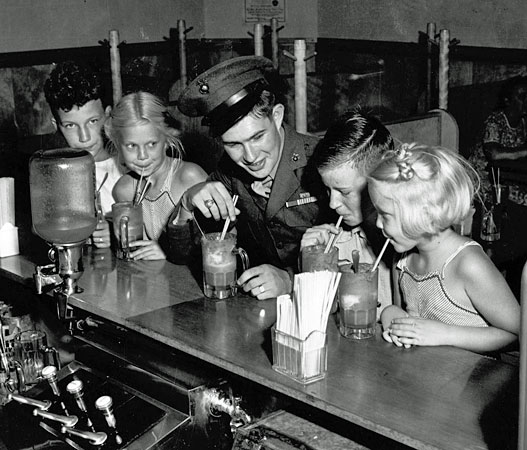
My grandson gave me a little book the other day from 1941. It was titled “the richness of life lies in the memories we have forgotten.” It did seem that life was a lot simpler 70 years ago. The United States had not entered the Second World War at the beginning of 1941 and we, as a nation, had not completely put the Great Depression behind us. It was a good year and a bad year. By December of 1941, the Japanese had attacked Pearl Harbor and killed over 2,000 seamen.
I was amazed at the number of products that we took for granted back then that have disappeared either from our grocery shelves or showroom floors: the Car of the Times was a 1941 DeSoto with fluid drive and new airfoil headlights; A & P was a popular Super Market selling Eight O’Clock and Red Circle Coffee; Texaco was a major oil and gasoline dealer, and Franklin Roosevelt was inaugurated for a third term as the President of the United States. There were approximately 140,000,000 Americans living on an average income of $1,777.00 per year.
It is hard to imagine that a postage stamp was 3 cents, a movie ticket 30 cents and gasoline sold for 12 cents a gallon. The average rent per month was $32.00 and new car cost a staggering $850.00. You could go to Harvard University for $420.00 per year. So what has happened in the last 70 years?
The poverty level for a family of four in the United States today is $22,350.00 and we have over 46 million Americans on Food Stamps. Our unemployment rate seems to hang around 14.1 million people with almost 50% out of work for more than 27 weeks. Gasoline is $3.50 a gallon; a first class stamp is going up to 45 cents in January, and $9.00 is the average cost of a movie; a new car is roughly $20,000.00 with tax and rent can vary from $500 to $1,000 per month for an average apartment. Tuition at Harvard University is $52,652 including room and board and fees. It takes a lot of money in 2011 to just “survive.” So when I look back at 1941, I wonder.
The Historical Inflation Calculator calculates price inflation between any two dates from 1913 to the latest month reported by the U.S. Bureau of Labor Statistics. $100.00 in January of 1941 would be worth $1,561.87 in January of 2011. The Cost of Living in 1941 was much cheaper than today. There was no city tax and no state tax. The average electric bill came every two months and the cost was only a few dollars. Heat was generated by coal in a gravity furnace; a fan was a big energy user along with the light bulb and the radio.
Today we have cell phones, iPods, flat screen TV’s, frost free freezers, microwaves, forced air gas furnaces, automatic washers and dryers, central air, etc. so I guess life is a little better from the standpoint of daily living, but we still buy a gallon of gas, drive cars, go to the movies when we get tired of TV, rent apartments and mail letters. But are we, as a nation, any better off?
According the to the Social Security Administration, the median income for American workers in 2010 was $26,364 just slightly above the official poverty level for a family of four. What surprises me the most is, that back in 1941, no one felt that they were poor. Many of us had less than the next guy and many of the meals consisted of hash, stew, and a mix of leftovers but we were not hungry. Our clothes were not the best but we were clothed. If I were to guess, I would say that television and advertising has set up a level of expectation of “what we should be” that did not exist years ago. It is sad in a way as all the modern conveniences that have made our lives physically easier have had an adverse affect on our mental outlook as we are no longer satisfied with our life and constantly strive to be better off. But are we?








